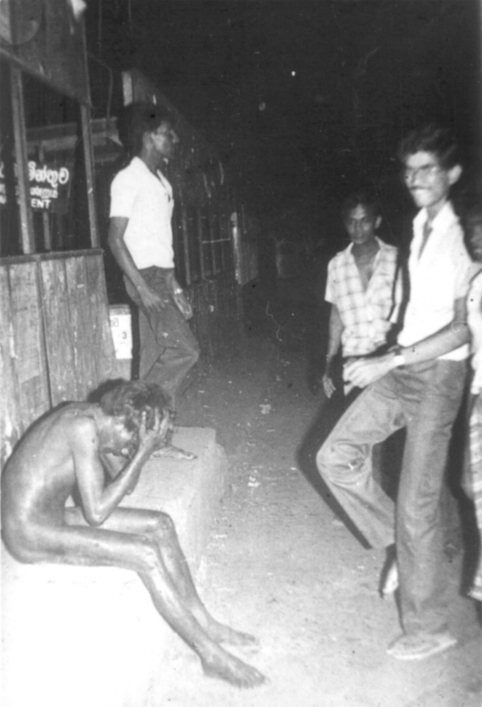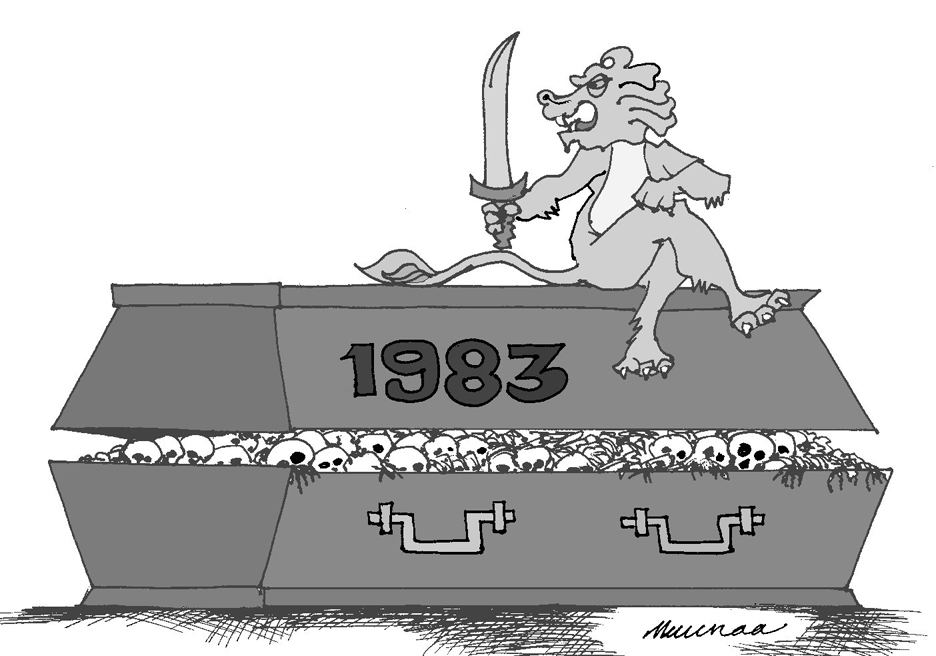"While Black July destroyed the Tamil economic base in the island, it created the now flourishing global Diasporic economic base. While it sought to silence Tamil political struggle ‘for once and for all’, it instead spread Tamil activism across the world. It sought to erase the Eelam Tamil cultural symbolism and identity, but instead rendered them globally recognised.
The present is thus inextricably linked to the past. And the past will also define the future. Until there is accountability for the mass atrocities against the Tamil people, until justice – the bedrock for any lasting peace - emerges, until Tamils are recognised as a people with equal rights and a rightful place in their homeland, the island’s northeast, Sri Lanka will remain synonymous with ethnic strife."
- Jan Janayagam. See her comment here.
 |
|
This iconic photograph of the July 1983 riots was taken by Chandragupta Amarasinghe. |
“Motorists were dragged from their cars to be stoned and beaten with sticks. Others were cut down with knives and axes. Mobs of Sinhala youth rampaged through the streets, ransacking homes, shops and offices, looting them and setting them ablaze, as they sought out members of the Tamil ethnic minority. A mob attacked a Tamil cyclist riding near Colombo’s eye hospital. The cyclist was hauled from his bike, drenched with petrol and set alight. As he ran screaming down the street, the mob set on him again and hacked him down with jungle knives.”
- The Daily Telegraph, July 26, 1983.
“Sri Lanka Army personnel actively encouraged arson and the looting of Tamil business establishments and homes in Colombo. … Absolutely no action was taken to apprehend or prevent the criminal elements involved in these activities. In many instances army personnel participated in the looting of shops.”
- The Times August 4, 1983.
“In Colombo at least 500 cars some with drivers and passengers inside were burnt. Tamil-owned buses, running between Colombo and Jaffna were burnt. Tamil patients in hospitals were attacked and killed. Some had their throats cut as they lay in their beds.”
- N. Sanmugathasan, General Secretary of the Ceylon Communist Party.
“The most shattering report came from a friend who was a civil servant; he told me that he had helped plan the riots at the orders of his superiors. When I heard him say this, I was so shocked I told him I simply couldn’t believe him, but he insisted he was telling the truth, and in fact he justified the Government’s decision to stage the riots. When I heard this, I telephoned an official in our own [US] State Department, and while he declined to discuss the matter, I got the impression that he already knew from our embassy in Colombo what I was telling him.”
- George Immerwahr, a United Nations civil servant and US citizen who had worked in Sri Lanka in the 1950s.
Also, see our feature articles:
Deserving victims, just violence
Eyes ‘gouged out’ in mockery (The Guardian, August 5, 1983)

